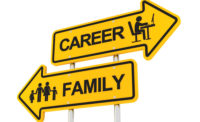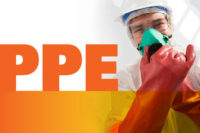How many companies are psychologically safe?
Most of the attention goes to physical hazards

Credit: Getty Images
You may feel safe on the job. Your safety manager is doing her best to keep you out of harm’s way. You have all the PPE you need. The workplace is regularly audited; even close calls are analyzed for lessons to be learned. Injuries are not common, and it’s been a couple of years since there has been a serious one sending a co-worker to the hospital.
Here we’re talking physical safety, which is another way of saying traditional safety. Making use of machine guards, barriers, good lighting, good housekeeping, air monitoring, rules, training, discipline if necessary, pre-shift meetings and the like to keep your body parts intact and your safety awareness sharp.
Beyond barriers & machine guards
Another way of feeling safe on your job is in terms of psychological safety. This is mental and emotional safety. It’s the feeling of being able to speak up, take risks, and make mistakes without fear of negative consequences. It brings into play perceptions, relationships, communication, motivation (or lack thereof), leadership support (or lack thereof), and esoteric concepts such as “being in the flow;” the anxiety zone; the apathy zone; the learning zone; productive conflict (would you know it when you see it?); and creating “space” for voicing half-finished thoughts. Do you feel it’s safe for you to put it out there — opinions and ideas?
Up close and personal safety
Psychological safety is about how you feel at work; how you feel about work:
- Are you challenged by your work?
- Are you doing your best work?
- Can you be your true self at work?
- Do you ask for help or keep to yourself?
- Do you feel appreciated by co-workers and managers?
- Are you motivated to offer suggestions for improvements?
- Do you feel burned-out by work?
- Stressed-out by work?
- Can you be vulnerable, open and candid with managers and co-workers?
- Do you feel engaged by co-workers and mangers, ready to contribute and collaborate?
Who feels safe?
Most workers in the U.S. agree their current workplace is a “psychologically safe and healthy environment,” according to research. Research also says you’re more likely to agree if you are a male, have a high household income, have completed a high level of education, and are over the age of 50. You’re less likely to agree if you have a low household income and have a low or medium education.
To look at it another way, offices are more likely to be psychologically safe than construction sites or assembly lines.
Offices have few physical risks, few injuries, and don’t need many facets of traditional safety. The environment lends itself to addressing psychological safety. Much blue collar work can be dangerous, dirty, and vulnerable to serious injuries and fatalities. Traditional safety practices are needed and “feelings” aren’t given a lot of attention.
Does a class system run through safety? Research suggests so.
Colliding with the times
Still, I’m surprised and skeptical that almost two-thirds of U.S. workers say their workplaces are psychologically safe and healthy.
Ask around. I’ve spent decades interviewing scores of safety pros, managers, employees, supervisors, OSHA compliance folks and consultants. They’ll tell you fear runs through many, if not most, work environments. It’s a sign of our age of anxiety. Work life is unpredictable. Companies are constantly bought and sold. Managers come and go. Cost-cutting seems a permanent mindset. Layoffs may be just around the corner. Employee turnover is like a spinning turnstile. Longevity is long gone. Loyalty is foreign to many younger employees. “What, stay here for 20, 10, even 5 years?”
There is a reason research finds workers over age 50 are more positive about their work environments.
Psychological safety — voicing opinions, being candid — seems at odds with the age of anger. To vaccinate or not vaccinate? To mask up or not at all. To despair over climate change or say it’s hogwash. To storm the Capitol or be mortified. To turn off the news — it’s too depressing — or argue it’s fake.
These are tough times to instill psychological safety throughout the workforce. It’s nuanced. It takes time. And also collaboration, respect and trust. Psychological safety is complicated. Traditional safety is about routines — issuing PPE, holding training classes.
Forbes magazine says “few leaders display the behaviors that can instill psychological safety.” For leaders, preventing physical harm is easier than preventing mental burnout. Dealing with risk-takers, malingers, resisters and protesters takes less thinking than 1) how to handle employees who feel like they don’t belong; 2) employees who don’t feel challenged; 3) who feel like their contributions don’t matter and no one is listening; 4) who are afraid to speak up, speak their minds, because “this company doesn’t encourage that sort of behavior.”
I think in 2024 a cloud of uncertainty and unease hangs over many businesses. Of course, there are exceptions. Small businesses and family businesses with less layers of bureaucracy can get in touch with employee thoughts and feelings. Check out Fortune’s annual “100 Best Places to Work.” Large corporations vested in protecting their brand, simply innovative or with people-oriented leaders will take on the challenge of creating and sustaining a psychologically safe environment.
How do you rate your workplace in terms of being psychologically safe? Are the management doors open or shut? Communication constant and “real” — truthful — or simply roll-your-eyes lip service? Is mental well-being addressed with the same resolve that goes to preventing injuries? Does your company have half a culture (physical protections) or a full-fledged culture that protects emotional states, mental well-being, and yes, feelings?
Just asking…
Looking for a reprint of this article?
From high-res PDFs to custom plaques, order your copy today!








